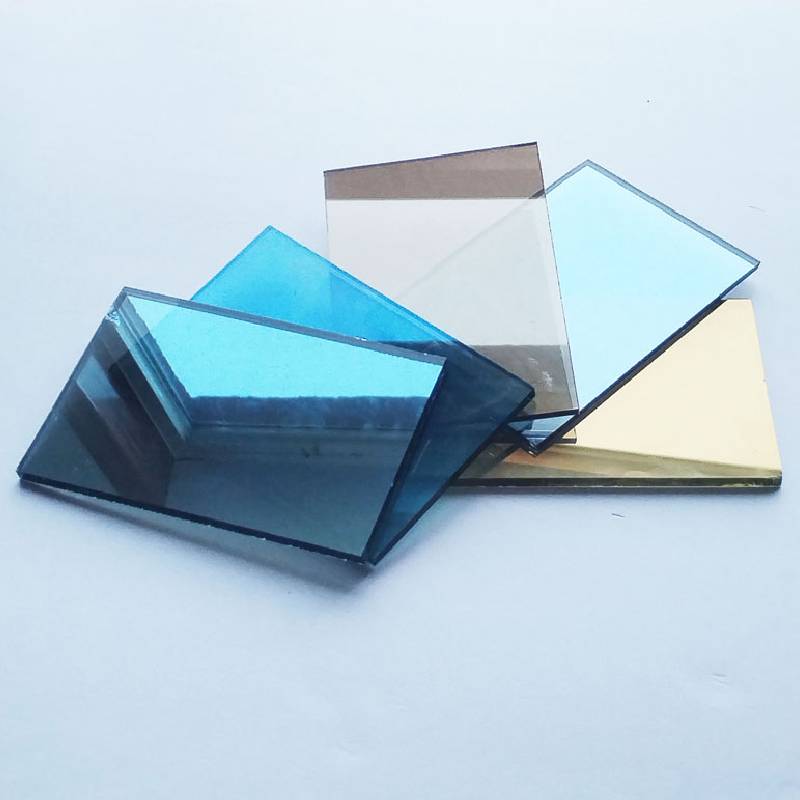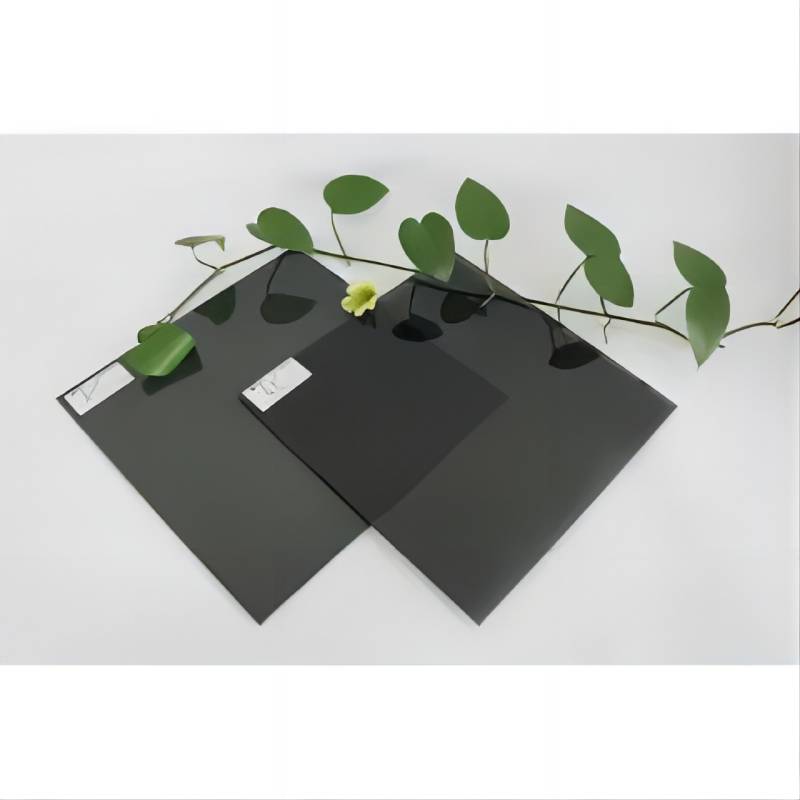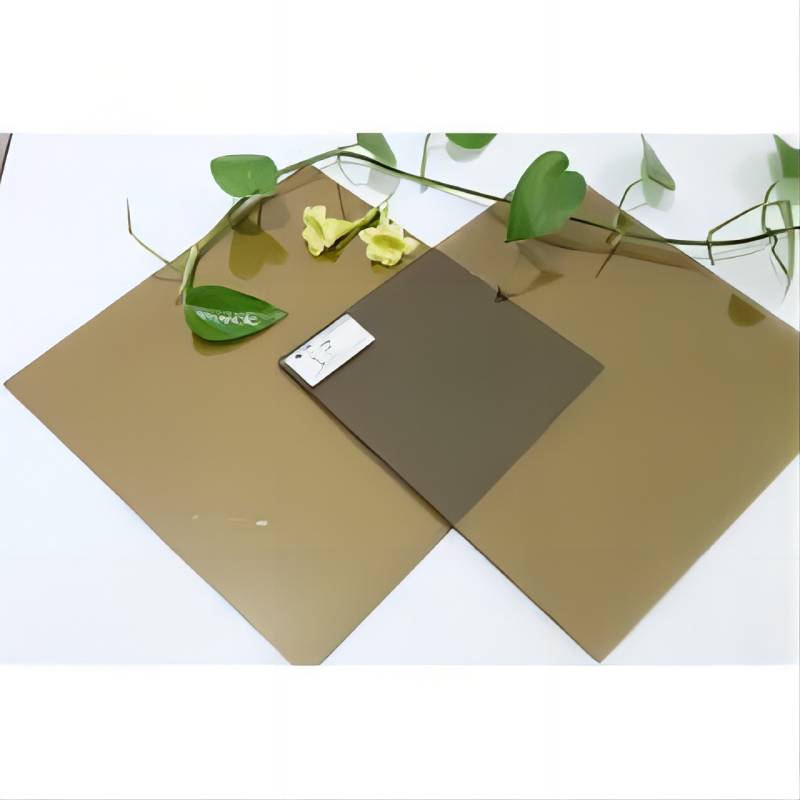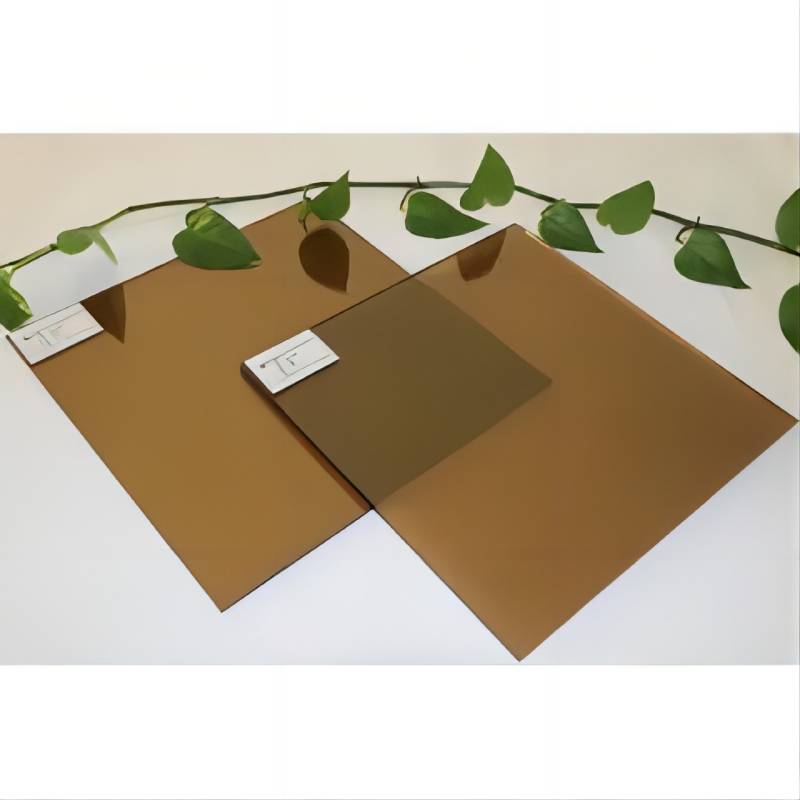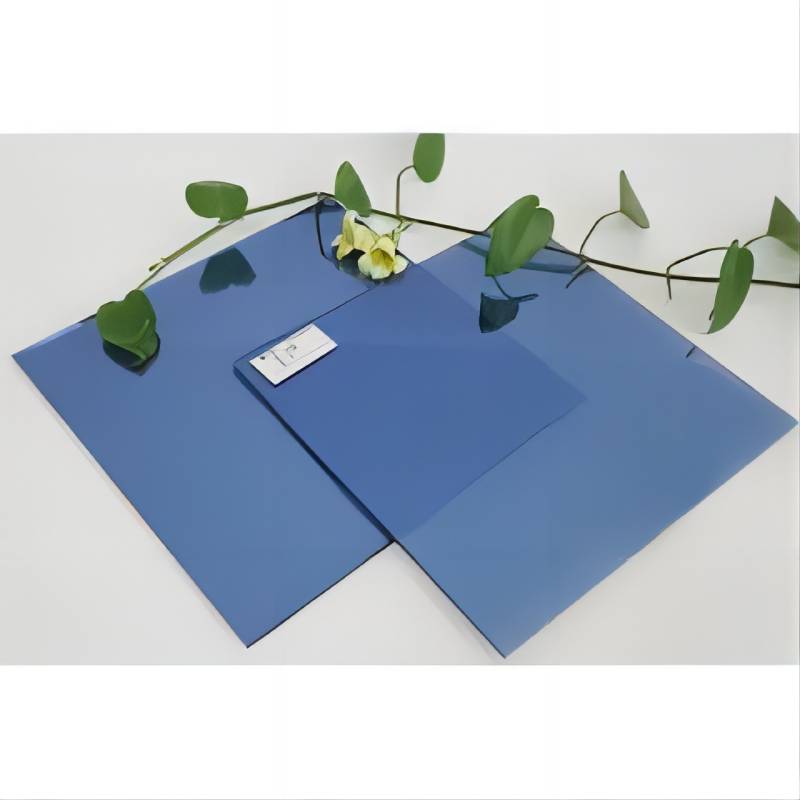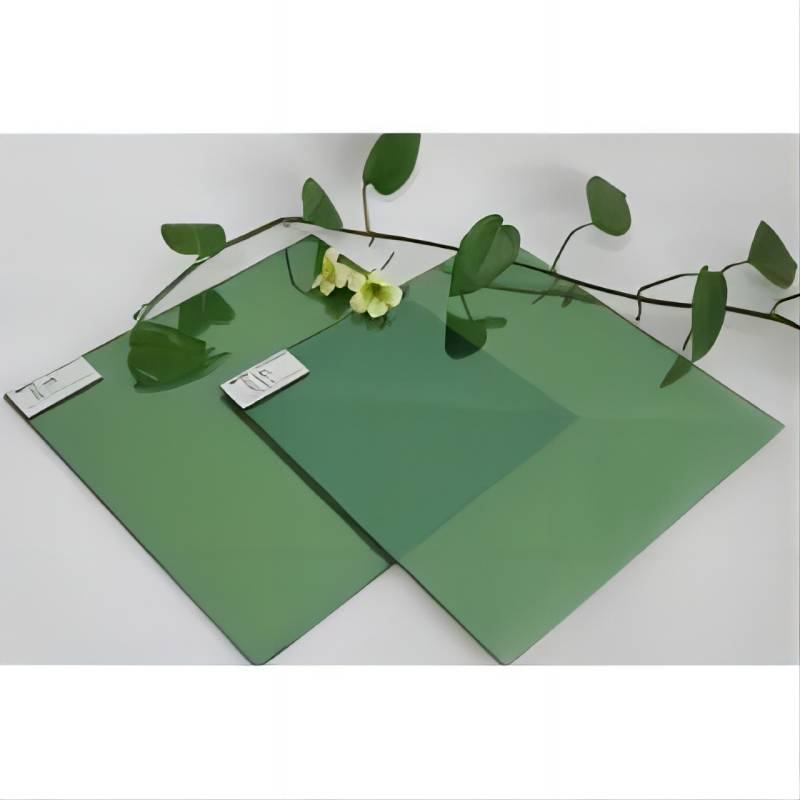The Evolution of Reflective Glass in Modern Architecture
Reflective glass technology has transformed contemporary architecture, merging aesthetic appeal with functional performance. Since its commercial introduction in the 1960s, reflective glass has evolved from simple solar control applications to sophisticated energy management systems. Today's reflective glass solutions incorporate multiple metallic oxide layers applied through advanced magnetron sputtering processes, creating surfaces that selectively reflect infrared radiation while maintaining high visible light transmission.
The global market for architectural reflective glass is projected to grow at 6.8% CAGR through 2028 (Grand View Research). This growth is driven by sustainability mandates like the EU's Energy Performance of Buildings Directive and California's Title 24, which demand ever-higher thermal performance from building envelopes. The latest third-generation reflective glass variants achieve solar heat gain coefficients (SHGC) as low as 0.23 while maintaining light-to-solar gain ratios above 1.25, making them essential for net-zero energy building designs.
Technical Specifications of Modern Reflective Glass
Performance characteristics of reflective glass are determined by multiple technical parameters that architects must balance:
Key Parameters Comparison
| Parameter |
Dark Green 5mm |
Bronze Reflective |
Blue Reflective |
Black Reflective |
| Visible Light Transmission (%) |
18-22 |
14-18 |
25-30 |
8-12 |
| Solar Heat Gain Coefficient |
0.24-0.28 |
0.22-0.26 |
0.26-0.32 |
0.18-0.22 |
| UV Rejection (%) |
99+ |
99+ |
99+ |
99+ |
| Thermal Conductivity (W/m·K) |
0.96 |
0.96 |
0.96 |
0.96 |
| Light-to-Solar Gain Ratio |
1.21 |
1.18 |
1.24 |
1.06 |
| Surface Emissivity |
0.08 |
0.07 |
0.10 |
0.06 |
Material Science Behind Reflective Coatings
The exceptional performance of modern reflective glass originates in nanotechnology-scale engineering. Advanced multi-layer coatings applied via reflective glass manufacturing typically consist of:
- Silver (Ag) layers providing infrared reflection
- Titanium nitride (TiN) for durability and color tuning
- Zinc oxide (ZnO) interface layers enhancing adhesion
- Silicon nitride (Si₃N₄) as protective top layer
Shanghai Zhuorui's proprietary manufacturing process achieves coating thicknesses controlled within ±3% tolerance through closed-loop plasma monitoring systems. These nanometer-scale precision coatings create constructive interference patterns that specifically target infrared wavelengths between 780-2500 nm while maintaining high visible light transmission.
Application-Specific Solutions
1. Blue Reflective Glass Applications
With its higher visible light transmission (25-30%), blue reflective glass is ideal for commercial buildings prioritizing natural daylighting while reducing cooling loads. The average blue reflective glass price ranges from $22-$28/m² depending on thickness and order volume. Coastal applications benefit from its excellent resistance to salt corrosion.
2. Bronze Reflective Glass Applications
Bronze-tinted reflective glass offers a warm, neutral appearance with excellent thermal performance. Widely specified for corporate headquarters and luxury hotels, bronze finishes typically reduce visible light transmission to 14-18% while achieving SHGC as low as 0.22.
3. Black Reflective Glass Applications
The premium solution for maximum privacy and solar control, black reflective glass achieves VLT as low as 8% while delivering unmatched aesthetic uniformity. Black reflective glass window systems have become particularly popular for high-security government buildings and luxury residences in tropical climates.
Reflective Glass Technical FAQ
Q1: What is the typical lifespan of reflective glass coatings?
Modern pyrolytic and magnetron sputtered coatings for reflective glass maintain performance for 20+ years when properly installed. Accelerated weathering tests (ISO 11484) show less than 5% degradation in solar performance after 5,000 hours of UV exposure.
Q2: How does 5mm thickness affect performance compared to 6mm?
The 5mm reflective glass provides optimal balance between weight and performance. While 6mm offers slightly better sound insulation (STC 35 vs STC 33), the 5mm reflective glass price advantage and similar thermal properties make it preferred for most applications.
Q3: What standards govern reflective glass installation?
Key standards include ASTM E2141 for coating durability, ISO 9050 for light/energy calculations, and EN 572-1 for glass properties. Window assemblies follow ASTM E283 water/air infiltration testing.
Q4: Can reflective glass be laminated or tempered?
Yes, Shanghai Zhuorui offers both heat-strengthened and fully tempered versions with laminated options. The coating application occurs pre-tempering to ensure optimal adhesion.
Q5: How does reflective glass compare to low-e alternatives?
While both technologies utilize metallic coatings, reflective glass prioritizes solar heat rejection (lower SHGC) whereas low-e glass emphasizes thermal retention (lower U-value). Premium solutions now combine both technologies.
Q6: What maintenance does reflective glass require?
Regular cleaning with soft cloth and mild detergent maintains appearance. Avoid abrasive materials or high-pressure washing which can damage coatings. Consult our technical guide for details.
Q7: Is custom color matching available?
Shanghai Zhuorui offers custom color development with reflectance matching ±3% to target specifications. Minimum order quantities apply for custom formulations.
Industry Recognition & Future Developments
Reflective glass continues to evolve through academic research and industrial innovation. The International Journal of Applied Glass Science recently documented new electrochromic-reflective hybrid systems that achieve dynamic solar heat gain coefficients ranging from 0.15-0.45 (https://ceramics.onlinelibrary.wiley.com/doi/full/10.1111/ijag.12570).
Meanwhile, Building and Environment journal published findings showing contemporary reflective glass installations in Singapore reduced cooling loads by 31% compared to clear float glass, with significant impacts on urban heat island mitigation (https://www.sciencedirect.com/science/article/abs/pii/S0360132318307862).
As nanotechnology enables increasingly precise spectral control, we're transitioning to wavelength-selective "solar funnel" glass that simultaneously generates electricity while rejecting heat. These developments will make tomorrow's architectural glass active energy components rather than passive barriers.
"The integration of advanced spectrally-selective coatings represents the most significant development in architectural glass since the float glass process. These technologies will be fundamental to achieving decarbonization targets in the built environment."
- Dr. Helena James, Materials Science Research Director, Fraunhofer Institute
 Afrikaans
Afrikaans  Albanian
Albanian  Amharic
Amharic  Arabic
Arabic  Armenian
Armenian  Azerbaijani
Azerbaijani  Basque
Basque  Belarusian
Belarusian  Bengali
Bengali  Bosnian
Bosnian  Bulgarian
Bulgarian  Catalan
Catalan  Cebuano
Cebuano  Corsican
Corsican  Croatian
Croatian  Czech
Czech  Danish
Danish  Dutch
Dutch  English
English  Esperanto
Esperanto  Estonian
Estonian  Finnish
Finnish  French
French  Frisian
Frisian  Galician
Galician  Georgian
Georgian  German
German  Greek
Greek  Gujarati
Gujarati  Haitian Creole
Haitian Creole  hausa
hausa  hawaiian
hawaiian  Hebrew
Hebrew  Hindi
Hindi  Miao
Miao  Hungarian
Hungarian  Icelandic
Icelandic  igbo
igbo  Indonesian
Indonesian  irish
irish  Italian
Italian  Japanese
Japanese  Javanese
Javanese  Kannada
Kannada  kazakh
kazakh  Khmer
Khmer  Rwandese
Rwandese  Korean
Korean  Kurdish
Kurdish  Kyrgyz
Kyrgyz  Lao
Lao  Latin
Latin  Latvian
Latvian  Lithuanian
Lithuanian  Luxembourgish
Luxembourgish  Macedonian
Macedonian  Malgashi
Malgashi  Malay
Malay  Malayalam
Malayalam  Maltese
Maltese  Maori
Maori  Marathi
Marathi  Mongolian
Mongolian  Myanmar
Myanmar  Nepali
Nepali  Norwegian
Norwegian  Norwegian
Norwegian  Occitan
Occitan  Pashto
Pashto  Persian
Persian  Polish
Polish  Portuguese
Portuguese  Punjabi
Punjabi  Romanian
Romanian  Russian
Russian  Samoan
Samoan  Scottish Gaelic
Scottish Gaelic  Serbian
Serbian  Sesotho
Sesotho  Shona
Shona  Sindhi
Sindhi  Sinhala
Sinhala  Slovak
Slovak  Slovenian
Slovenian  Somali
Somali  Spanish
Spanish  Sundanese
Sundanese  Swahili
Swahili  Swedish
Swedish  Tagalog
Tagalog  Tajik
Tajik  Tamil
Tamil  Tatar
Tatar  Telugu
Telugu  Thai
Thai  Turkish
Turkish  Turkmen
Turkmen  Ukrainian
Ukrainian  Urdu
Urdu  Uighur
Uighur  Uzbek
Uzbek  Vietnamese
Vietnamese  Welsh
Welsh  Bantu
Bantu  Yiddish
Yiddish  Yoruba
Yoruba  Zulu
Zulu 

